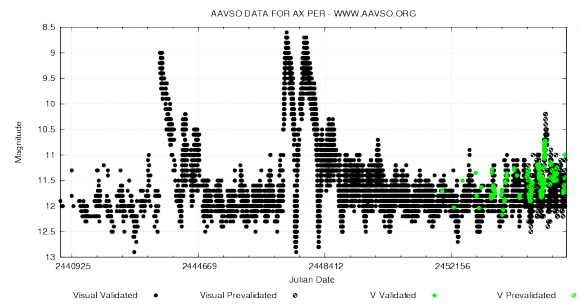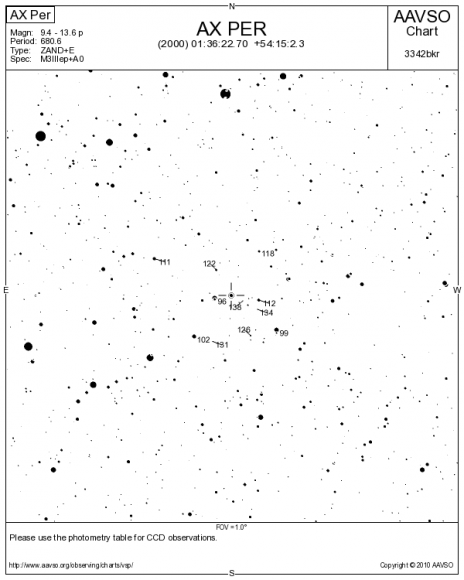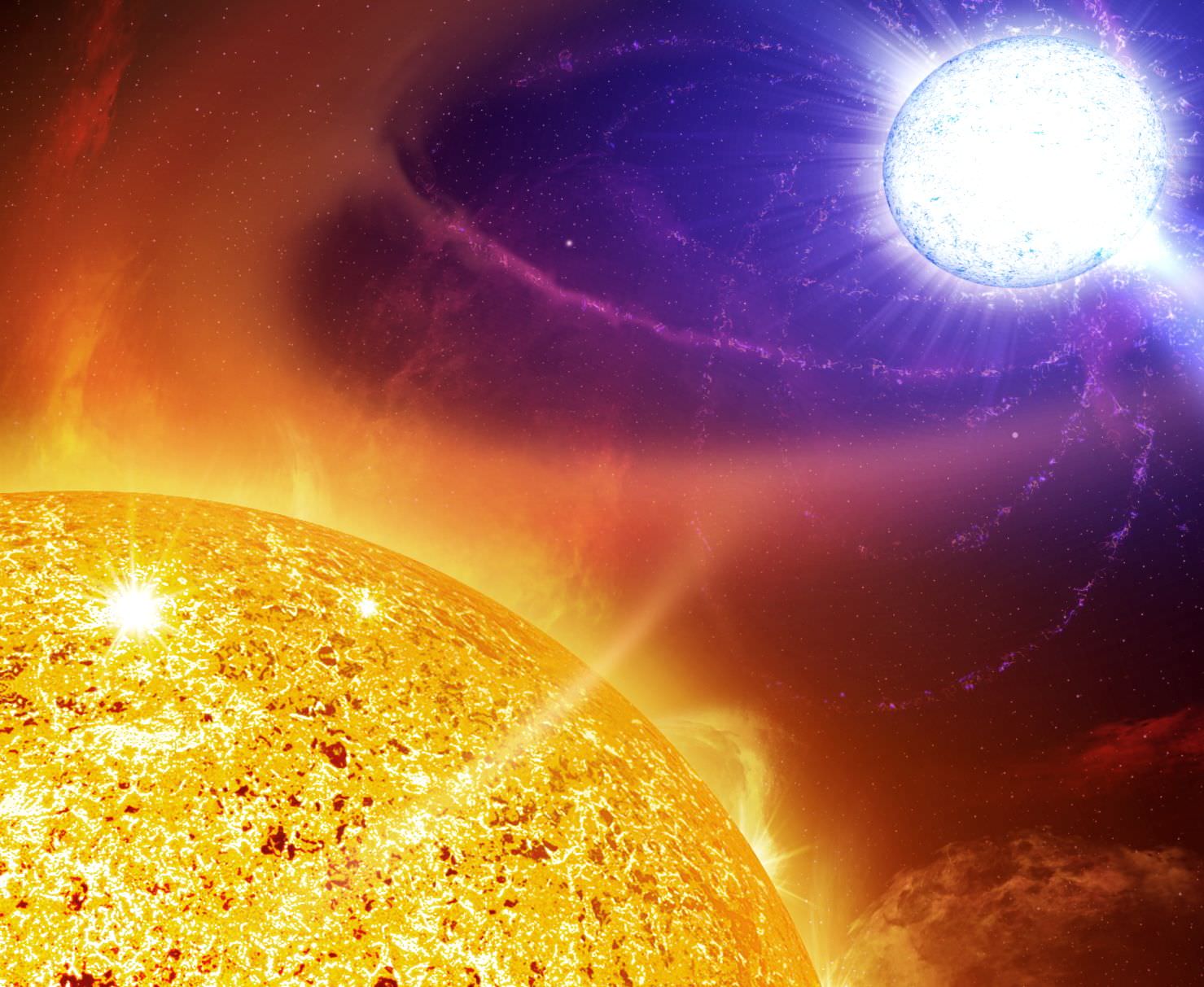[/caption]
November 23rd, astronomers from the Asiago Novae and Symbiotic Stars collaboration announced recent changes in the symbiotic variable star, AX Persei, could indicate the onset of a rare eruption of this system. The last major eruption took place between 1988 and1992. In the (northern hemisphere) spring of 2009, AX Per underwent a short outburst that was the first time since 1992 this star had experienced a bright phase. Now AX Per is on the rise again. This has tempted astronomers to speculate that another major eruption could be in the making.
Symbiotic variable stars are binary systems whose members are a hot compact white dwarf in a wide orbit around a cool giant star. The orbital periods of symbiotic variables are between 100 and 2000 days. Unlike dwarf novae, compact binaries whose periods are measured in hours, where mass is transferred directly via an accretion disk around the white dwarf, siphoned directly from the surface of the secondary, in symbiotic variables the pair orbit each other far enough away that the mass exchanged between them comes from the strong stellar wind blowing off the red giant. Both stars reside within a shared cloud of gas and dust called a common envelope.
When astronomers look at the spectra of these systems they see a very complex picture. They see the spectra of a hot compact object superimposed on the spectra of a cool giant star tangled up with the spectrum of the common envelope. The term “symbiotic” was coined in 1941 to describe stars with this combined spectrum.
Typically, these systems will remain quiescent or undergo slow, irregular changes in brightness for years at a time. Only occasionally do they undergo large outbursts of several magnitudes. These outbursts are believed to be caused either by abrupt changes in the accretion flow of gas onto the primary, or by the onset of thermonuclear burning of the material piled up on the surface of the white dwarf. Whatever the cause, these major eruptions are rare and unpredictable.

AX Per underwent a short-duration flare about one year before the onset of the major 1988-1992 outburst. Now astronomers are tempted to speculate. Could the 2009 short outburst be a similar precursor type event? The present rise in brightness by AX Per might be the onset of a major outburst event similar to that in 1988-1992. The watch begins now, and professional and amateur variable star observers will be keeping a close eye on AX Per in the coming months.
Ranging from 8.5 to 13th magnitude, AX Persei is visible to anyone with an 8-inch telescope, and if it erupts to maximum it will be visible in binoculars. You can monitor this interesting star and report your observations to the American Association of Variable Star Observers (AAVSO). Charts with comparison stars of known brightness can be plotted and printed using the AAVSO’s Variable Star Chart Plotter, VSP.



I will try to keep this in mind when observing. Though I do observing more for fun than for serious study.
LC